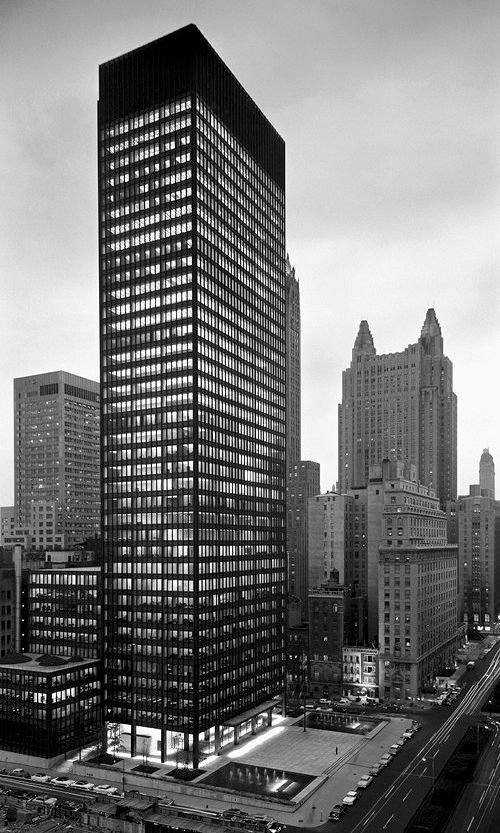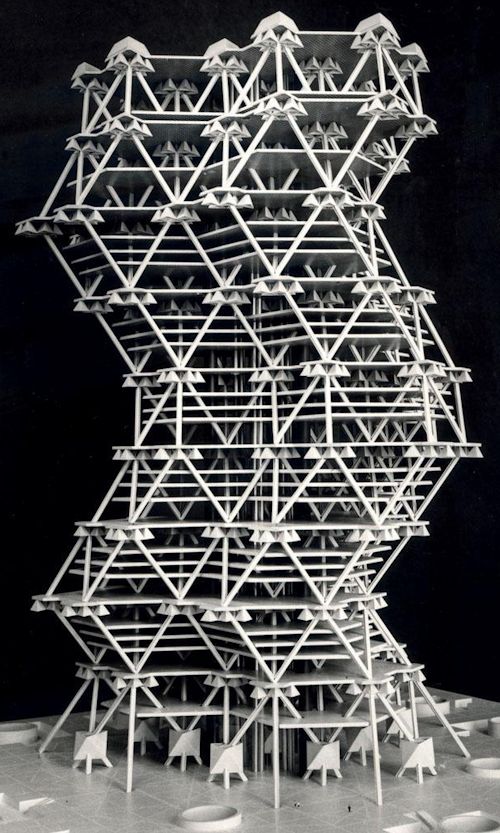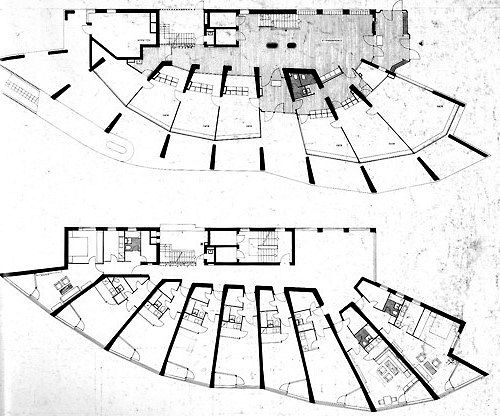history | not an easy book |
|
|
|
In Modern architecture we have operated too long under the restrictions of unbending rectangular forms supposed to have grown out of the technical requirements of the frame and the mass-produced curtain wall. In contrasting Mies' and Johnson's Seagram Building with Kahn's project for an office tower in Philadelphia it can be seen that Mies and Johnson reject all contradictions of diagonal wind-bracing in favor of an expression of a rectilinear frame. Kahn once said that the Seagram Building was like a beautiful lady with hidden corsets. Kahn, in contrast, expresses the wind-bracing-but at the expense of such vertical elements as the elevator and, indeed of the spaces for people
|
In many works of Le Corbusier and Aalto, however, a balance, or perhaps a tension, is achieved between the rectilinearity of standard techniques, and the diagonal which expresses exceptional conditions. In his apartments at Bremen, Aalto has taken the rectangular order of Le Corbusier's basic dwelling unit, which makes up his high-rise apartment slabs, and distorted it into diagonals in order to orient the dwelling unit toward the south for light and for the view. The north-facing stairs and circulation areas remain strictly rectilinear in plan. Even in the most extreme units an essential rectilinearity and regularity of space is maintained.
|
www.quondam.com/45/4505y.htm | Quondam © 2019.10.17 |



